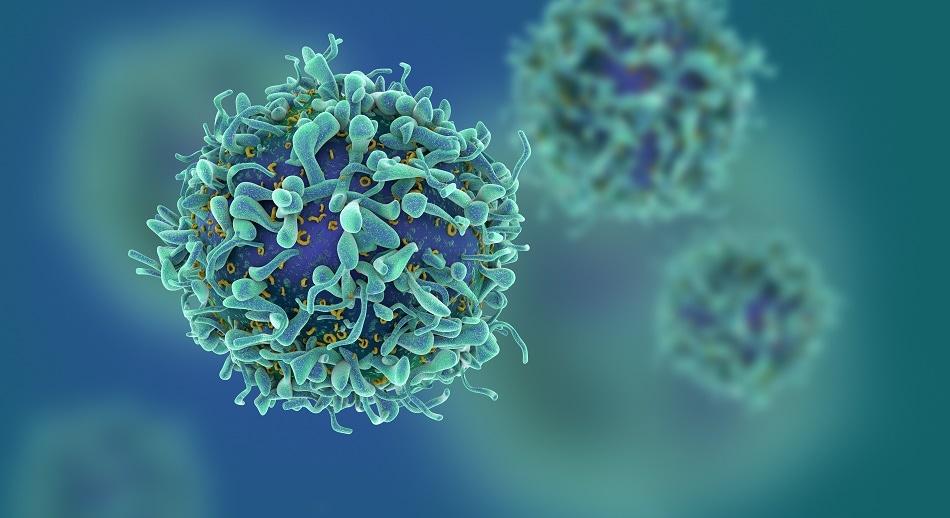 Image credit: fusebulb / Shutterstock.com
Image credit: fusebulb / Shutterstock.com
Image credit: fusebulb / Shutterstock.com
Research into strategies for trying to find ways to prevent, treat, and even cure cancer have been ongoing for centuries, for example, chimney soot was identified as a cause back in the 18th century.
Since then, other sources known to cause cancer such as smoking, diet, and lifestyle have come to light. However, the difficulty has not always been in identifying what the causes or symptoms of this pervasive disease are, rather that the ideal treatments and cures needed to eradicate the illness prove to be somewhat elusive.
While radiation treatments and chemotherapies have been developed and refined since the early 1900s to present day, saving countless lives since their inception, they can still prove to be unpleasant processes for patients to endure and often extremely invasive. Thus, there is still more to be done in research labs and healthcare facilities across the globe in the search for new and idealized treatments.
In recent years, scientists seeking new cancer treatments have had their interest piqued by small interfacing ribonucleic acid (siRNA) which are double-stranded anti-cancer molecules.
Yet, it has proven to be something of a challenge to transfer the agent to cancer cells as the agent is known to break down the defenses of natural cells due to the molecules of siRNA being unstable. However, researchers and scientists are well-aware of the potency the anti-cancer agent possesses and its ability to impede over-expressed cancer stimulating genes and have been working to come up with solutions to deliver siRNA to cancerous cells.
Research coming out of the University of Cambridge may have found the solution needed to overcome the aforementioned challenges. Leading the team is Dr. David Fairen-Jimenez, from the Department of Chemical Engineering and Biotechnology at Cambridge, who believes the study to be a progressive use of nanoparticles to create a technique that can deliver siRNA to cancer cells. These nanoparticles, known as metal-organic frameworks (MOF), overcome the issue of breaking down before delivering the anti-cancer agent as they only break down once inside the cancer cell.
MOF nanoparticles are 3D compounds capable of self-assembly as they combine organic and metallic building blocks. Utilizing advanced computational systems in the lab, Dr. Fairen-Jimenez and his team ran simulations to design a MOF that would be ideally suited to carrying siRNA molecules in cancer cells and that would also break down upon delivery.
With traditional cancer therapy if you're designing new drugs to treat the system, these can have different behaviors, geometries, sizes, and so you'd need a MOF that is optimal for each of these individual drugs. But for siRNA, once you develop one MOF that is useful, you can in principle use this for a range of different siRNA sequences, treating different diseases.
Dr. Fairen-Jimenez
Furthermore, the MOF nanoparticles that the Cambridge team innovated were able to circumvent the issue of endosomal entrapment which would otherwise obstruct the siRNA agent on its way toward cancer cells. This is a common bottleneck researchers face when exploring new methods of drug delivery caused by natural defense mechanisms kicking in to stop any foreign agents in the system. Dr. Fairen-Jimenez and his team added other elements to the MOF to ensure the siRNA agent reached its target as they counteracted endosomal entrapment up to 27% of the time.
With over 84,000 MOF structures found in the Cambridge Structural Database – and 1000 new structures currently being published each month – their unique properties can be fine-tuned for specific tasks and objectives. With the capacity to influence the toxicity and stability of the siRNA carrying MOFs scientists are able to work around side effects that could potentially harmful.
"One of the questions we get asked a lot is 'why do you want to use a metal-organic framework for healthcare?' because there are metals involved that might sound harmful to the body," said Dr. Fairen-Jimenez. Besides providing some promising responses to such concerns, the team also believe that the system is versatile enough to deliver multiple drugs at once, opening the door to combination therapy in conjunction with this method.
So, what the Cambridge team has achieved is nothing short of a potential groundbreaking platform that has the ability to deliver siRNA agents to cancer cells which could prove to be a giant leap forward into cancer treatment methods. This is due in part to the fact that the MOF nanoparticles can be modified for a dynamic range of siRNA molecular sequences as well as targeting a number of different genes for multiple therapies.
We focus on difficult diseases such as hard-to-treat cancers for which there has been no improvement in treatment in the last 20 years. We need to have something that can offer a solution; just extra years of life will be very welcome.
Dr. Fairen-Jimenez
Disclaimer: The views expressed here are those of the author expressed in their private capacity and do not necessarily represent the views of AZoM.com Limited T/A AZoNetwork the owner and operator of this website. This disclaimer forms part of the Terms and conditions of use of this website.